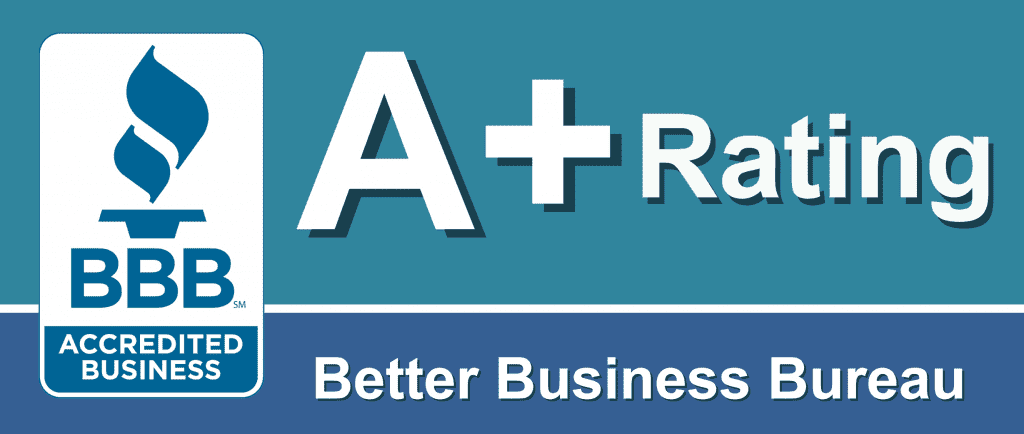Heading into the first few days of August 2019, mortgage rates are just above their recent lows. Conforming, FHA and Jumbo fixed mortgage rates remain attractive and mortgage loan application volume has decreased the last few weeks however they are significantly above levels seen earlier this year.
Homeowners are taking advantage of mortgage rates being near multi-year lows and homebuyers are starting to come back to the market as home prices seem to be leveling off.
As we move into the second-week mortgage rates are starting to improve as we move into August. Conforming, FHA and Jumbo fixed-rate mortgages are near multi-year lows for both purchase and refinance transactions. Anyone who has purchased a home in the last two years might want to consider reviewing their refinance options; especially those with a 30 year fixed rate above 4.00% and a 15 year fixed rate above 3.50%.
Last Few Weeks of August
Most Conforming, FHA, and Jumbo fixed mortgage rates for both refinance and purchase transactions are at multi-year lows as we move further into August. Refinance loan application volume continues to increase as homeowners look to lower their current interest rate, take cash out, or get rid of Private Mortgage Insurance (PMI) or FHA Mortgage Insurance (MI). Keep an eye on the Core CPI report. When it comes to mortgage rates there are some economic reports that have a bigger impact than others and one of the most important economic reports is the Core CPI report. The report is considered one of the best measurements of inflation in the US economy.

FHA Mortgage Update
Starting September 1st, 2019 the maximum Loan-T0-Value (LTV) ratio on a cash-out FHA mortgage loan will be 80%. Currently, the maximum LTV is 85%. Anyone who is considering a cash-out loan under the FHA loan program should make sure they move forward before this deadline. Under the cash-out FHA program, you can use the funds to pay off debt, improve the home, or pay bills such as medical or educational.
Important Economic Data This Week
Here we cover the daily economic events that might impact mortgage rates. The monthly Employment report plays a significant role in the direction of bond markets and mortgage rates. In addition to the Employment report, the Consumer Sentiment report will be closely watched as well. The bright spot in the economy has been the consumer so any signs of weakness for consumers would be concerning to the Fed. A significantly weaker than expected report could help push mortgage rates lower heading into next week.
Week 1:
- ISM Manufacturing PMI: Expectations are for a reading of 52.00 after last month’s reading of 51.7. Along with the Employment report tomorrow the ISM Manufacturing PMI report plays a significant role in the bond market and mortgage rate direction. The report was just released and it came in below expectations (51.2); this is another month of decline for a very important economic report. An internal component of the report (prices paid) sank dramatically. Expectations were for a reading of 49.6 however the prices paid component came in at 45.1 (good news for inflation which means good news for Mortgage-Backed Securities).
- Weekly Jobless Claims: Expectations are for a reading 214,000 unemployment claims filled. The reading came in at 215,000 unemployment claims. Continued claims rose from 1,676,000 to 1,699,000 continued. This means that unemployed people are having a harder time finding work than in previous weeks.
- Employment Report: Expectations are for 165,000 jobs created after last month’s report of 224,000 jobs created. Earnings increase expectations are for a 0.2% increase. The report came in at: 164,000 jobs created, 3% increase in wages, and a 3.7% unemployment rate. Last month’s job creation number was revised down from 224k to 193k and the average workweek hours continue to decline (last month it came in at 34.4 and this report came in at 34.3). Overall the report had little to no impact on bond markets and mortgage rates.
- Consumer Sentiment: Expectations are for a reading of 98.4. Strong consumer sentiment is an important part of the economy; economists keep an eye on this as a good measurement for how strong the consumer is when it comes to buying goods and services. The reading came in at 98.4 and had no impact on mortgage rates.
- Consumer Inflation Expectations: Expectations are for a reading of 2.6% for both the 1y and the 5y report. Inflation is important to Mortgage-Backed Securities and mortgage rates. While it’s unlikely this report will have a serious impact on MBS and mortgage rates it is interesting to see how consumers see inflation over the long term. The 1y reading came in at 2.6% and the 5y reading came in at 2.5%. The reports had no impact on mortgage rates.
Week 2:
- ISM Non-Manufacturing PMI: Expectations are for a 55.5 reading; last month’s reading was 55.1. The reading came in at 53.7 and post report the 10y yield moved below 1.76%. As you can see the report was much weaker than expected and well below last month’s reading.
- Mortgage Market Index: Last week the index came in at 484.00 with the Refinance component coming in at 1791.2 and the Purchase component coming in at 253.0. The Mortgage Market Index reading came in at 509.8 due to a significant increase in refinance applications. The Refinance component came in at 2003.10 and the Purchase component came in at 247.9 (a decline from last week). Seeing Purchase applications decline is surprising considering the current level of mortgage rates; sellers and home builders are hoping this trend reverses course. According to the Mortgage Banker Association the average 30 year fixed rate is 4.01% with nearly a .50 point in cost (plus fees). The good news is we’re significantly below that!
- Consumer Credit: Expectations are for a reading of 16.00 and last month’s reading came in at 17.09. The reading came in at 14.60 and it was the lowest reading in the last six months.
- Jobless Claims: Last week’s reading came in at 215,000 and that is the expectations for this week heading into the Thursday report. The big question over the next few weeks is will we start to see jobless claims increase due to the recent escalation of the trade war with China? Since the trade war started with China employment has been one of the few bright spots for the economy. Today’s report came in at 209,00 claims, and continued claims were 1,684,000 (both lower than last week).
- Wholesale Sales and Inventories: Expectations for Wholesale Inventories is a 0.2% growth and Wholesale Sales a 0.2% growth. The Wholesale Inventories report came in at 0.0% and the Wholesale Sales report came in at -0.3%.
- Core Producer Prices: Expectations are for a 2.4% increase (y/y) and the 0.2% (m/m). Last month’s reading came in at 2.3% and 0.3%. The annual reading came in at 2.1% and the monthly reading came in at -0.1%. Not a good report for the economy however for bonds and mortgage rates it’s a positive as it shows muted inflation continues on an annual basis and a slight decline on a month over month basis.
[elementor-template id=”17290″]
Week 3:
- Core CPI: Expectations are for a reading of 2.1% (annual) and 0.3% (monthly). Last month’s reading came in at 2.1% and 0.1%. The Core CPI report can have a major impact on bond markets and mortgage rates. It’s one of the most important measurements of inflation and a report showing inflation is moving higher could easily push mortgage rates back up to higher levels. This morning’s reading came in at 2.3% (year over year) and 0.3% (month over month). Post report the 10y yield moved 1.66% and Mortgage-Backed Securities also sold off a bit due to the slight increase in the monthly inflation report.
- Import and Export Prices: Import Prices are expected to come in at 0.0% (last month’s reading was -0.9%). Export Prices are expected to come in at a 0.0% reading as well (last month’s reading came in at -0.7%). Import Prices came in at a 0.2% increase and Export Prices came in at a 0.2% increase. Both higher than expected and higher than the previous month’s reading. There was no notable reaction in the bond market post-release.
- Mortgage Market Index: Last weeks reading of the Mortgage Bankers Association (MBA) Mortgage Market Index came in at 509.8; an increase from the previous week. The Refinance Index jumped to 2003.00 and the Purchase Index came in at 247.9. It will be interesting to see if the Purchase Index can increase with multi-year lows. Low home loan rates in California have helped fuel a “mini refinance boom” as homeowners look to lower their current mortgage rates. The Mortgage Market Index came in at 620.4; a huge jump from last week’s reading of 509.8. The MBA Purchase component came in at 252.6 and the Refinance component came in at 2742.9. This is one of the biggest jumps we’ve seen in years.
- Retail Sales: Expectations are for a reading of 0.3% after last month’s 0.4% increase. The reading came in at a 0.7% increase and post repot bonds sold off.
- Philly Fed Business Index: The market is expecting the Philly Fed index to decline from 21.8 (last month’s reading) to 10.00. The reading came in at 16.8; much stronger than anticipated.
- NAHB Housing Index: The industry is expecting a reading of 65 which is the same as the previous reading.
- Weekly Jobless Claims: Expectations for weekly Jobless Claims are at 212,000.
- Housing Starts: Housing Starts are expected to come in at 1,259,000 units (annual rate) after last month’s reading of 1,253,000 (annual rate). The report came in at 1,119,100 units (annual rate) which is significantly below expectations
- Building Permits: Building Permits are expected to come in at 1,270,000 permits (annual rate) after last month’s reading of 1,232,000 permits (annual rate). The report came in at 1,336,000 units (annual rate).
- 1y and 5y Inflation Outlook: The market is expecting the 1y Inflation Outlook to come in at 2.6% and the 5y Inflation Outlook to come in at 2.6%. The 1yr Inflation Outlook report came in at 2.7% and the 5y Inflation Outlook report came in at 2.6%.
Week 4:
- Mortgage Market Index: Last week the index came in at 620.4. The Refinance component came in at 2742.9 and the Purchase component came in at 252.6. It would not be surprising to see an increase in these numbers (especially with the Refinance component). UPDATE – This morning’s report came in lower than last week due to a fall in purchase applications. The overall index decreased to 614.6, the Purchase component decreased to 243.8 but the Refinance component increased to 2754.7.
- FOMC Minutes: We’re not expecting a huge surprise but if one or two comes out we’ll update the post with that information and how it may impact mortgage rates.
- Existing Home Sales: Expectations are for a 2.5% increase after last month’s -1.7% decrease.
- Jobless Claims: Last week the Jobless Claims report came in at 220,000 claims and expectations are for this week are 216,000 claims. The reading came in at 209,000 claims and Continued Claims came in at 1,674,000.00
- New Home Sales Report: Last month’s report showed a 7.00% increase in sales with an annual rate of 646,000 units. Expectations for Thursday’s report is a decline of 0.2% and an annual rate of 649,000 units.
- Durable Goods: Expectations were for a reading of 1.2% after last month’s 1.9% increase. This morning’s reading came in at 2.1% and had little to no impact on the bond market.
- Case-Shiller: Expectations are for a 2.4% increase and the report showed a 2.1% increase.
- Consumer Confidence: Heading into the Tuesday report; expectations are for a reading of 129.5 after last month’s reading of 135.7. The report came in higher than expected but slightly below last month’s reading. The 135.1 reading supports the claim that the consumer remains confident about the economy moving forward.
- Mortgage Market Index: Will these low mortgage rates continue to elevate mortgage application volume? A disappointing report this morning; last week’s reading of 614.6 could not be sustained and the index dropped to 576.2. The Purchase Index decreased from 243.8 to 234.1 and the Refinance Index decreased from 2754.7 to 2545.6. According to the Mortgage Bankers Association, the average 30-year fixed-rate increased from 3.90% to 3.94%.
- Jobless Claims: Last week’s reading came in at 209,000 and expectations are for 215,000 claims this week. The report came in as expected; 215,000 claims and the report had no impact on mortgage rates.
- Q2 Preliminary GDP: Expectations are for a reading of 2.0% and that’s exactly what we got this morning. This is slightly below the last reading of 2.1% growth.
- Core PCE: The last reading came in at 1.6% and expectations are for a reading of 1.6%. The reading came in at 1.60%; in line with market expectations.
- Personal Income: Expectations are for an increase of 0.3% after last month’s 0.4% increase. The Personal Income report came in at 0.1%; below expectations. It was a disappointing reading for the economy but as far as bonds are concerned (and mortgage rates) it is positive.
- Chicago PMI: Expectations are for a reading of 47.5. The Chicago PMI reading came in at 50.4; much higher than market expectations however there was little to no impact on bond markets and mortgage rates.
- Consumer Inflation: Last month the 1y reading came in at 2.7% and the 5y reading came in at 2.6%. For the most part, consumers are not concerned about long-term inflation trends.
Mortgage-Backed Securities & Treasury Snapshot:
August 1st – August 16th:
Mortgage-Backed Security FNMA 3.5 started the month at 102.25 and the FNMA 4.0 coupon started at 103.47. The 10y Treasury yield started the month at the 2.03% level. As expected the Fed lowered rates by .25% yesterday (July 31st) however it’s really important to remember that this does not mean mortgage rates declined by .25%. The Fed does not control mortgages they only have an influence over the Mortgage-Backed Securities market (which is where mortgage rates originate from). Yesterday was volatile for bond markets with yields moving to 2.02% then moving up to nearly 2.08% and finally finishing the day near 2.01%. For most lenders, mortgage rates in California remain stable throughout the day as mortgage companies took a “wait and see’ approach before making any significant adjustments.
August 19th – August 30th:
Mortgage-Backed Security FNMA 3.0 ended the month at 101.75, FNMA 3.5 at 102.67, and the FNMA 4.0 ended at 103.69. The 10y Treasury yield ended the month at the 1.52% level.
Money-Saving Mortgage Tips
Are you looking to refinance your current mortgage or perhaps you’re considering the purchase of a new home? Here are some money-saving mortgage tips you can use to help save you thousands of dollars on your next mortgage transaction!
- Work with well a respected/highly rated mortgage company. Use tools like the Better Business Bureau to help find quality mortgage companies to get quotes from. If you are using the BBB; make sure the company has at least an “A” rating and is Accredited by the BBB.
- Chose a Loan Officer that has at least 5+ years of experience (preferably 10+ years).
- Openly discuss with your Loan Officer your goals and ask lots of questions.
Doing these three things could end up saving you thousands of dollars on your next mortgage transaction. There are hundreds (possibly thousands!) of mortgage companies that advertise unrealistic mortgage rates just to get you in the door. Then at closing comes the big surprise; a higher rate and/or higher fees. That’s where the reputation of the mortgage company and the Loan Officer experience comes in.
A tool you can use to verify where current mortgage rates are at is the Mortgage Bankers Association weekly Mortgage Market Index report. Heading into this week the average 30 year fixed rate (with fees) is 4.00%.
Mortgage Rates And Loan Applications:
Confirming, FHA and Jumbo fixed mortgage rates are at multi-year lows, and because of this mortgage companies have seen a huge increase in loan application volume. In fact, many lenders are near or at capacity, and moving forward this might end up being a negative for mortgage rates.
The reason is simple; mortgage companies have little to no incentive to lower mortgage rates from these levels when they barely can keep up with the current influx of loan applications. Think of it like this; if owned a car dealership and you had thousands of people looking to buy a car but only had 100 cars….would you lower the price?
Probably not and that’s the situation lenders are currently in. They can only process so many applications and they can only lender so much money. So when the demand exceeds that it’s unlikely they will aggressively lower mortgage rates.










